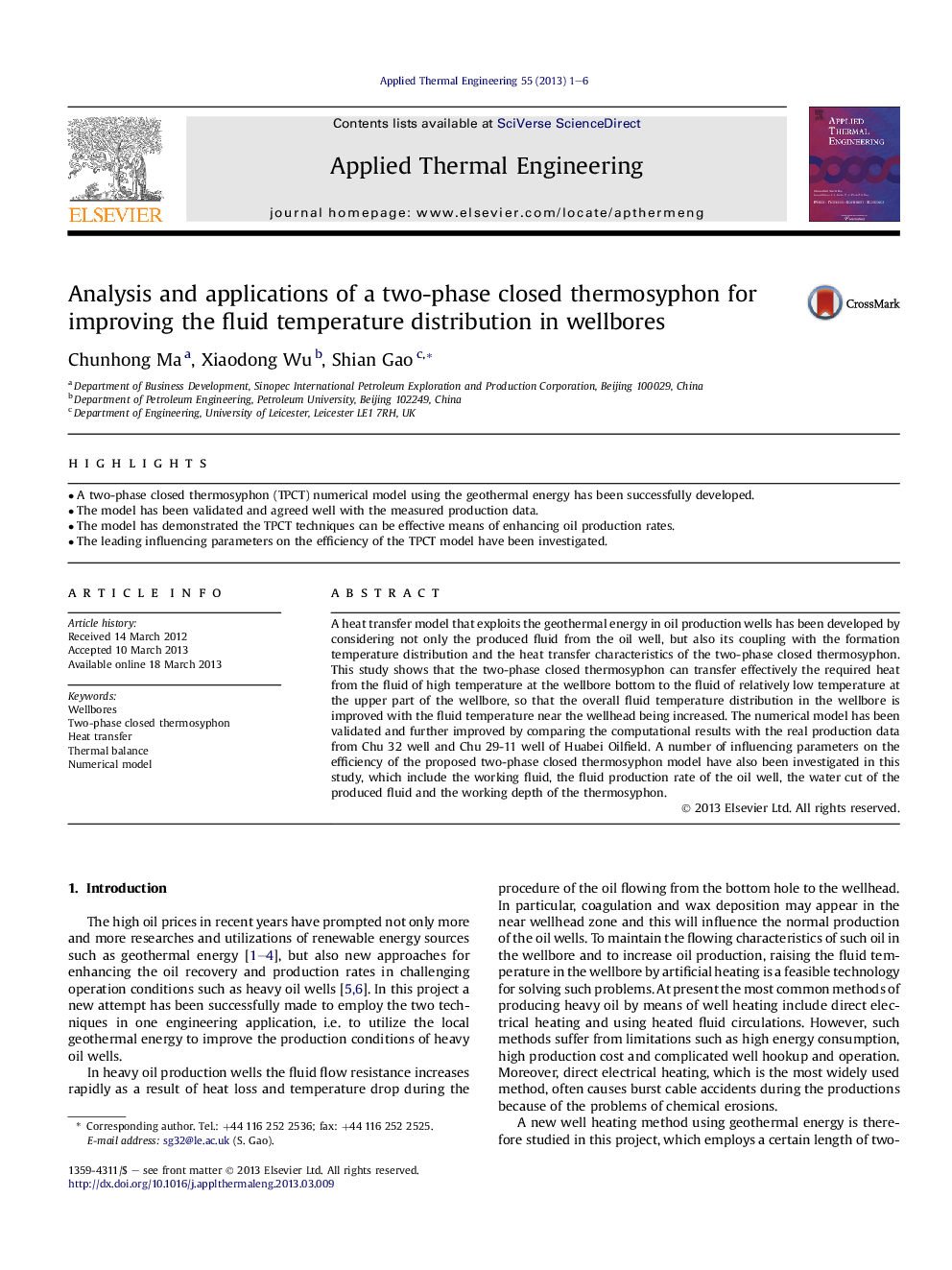| Article ID | Journal | Published Year | Pages | File Type |
|---|---|---|---|---|
| 646934 | Applied Thermal Engineering | 2013 | 6 Pages |
•A two-phase closed thermosyphon (TPCT) numerical model using the geothermal energy has been successfully developed.•The model has been validated and agreed well with the measured production data.•The model has demonstrated the TPCT techniques can be effective means of enhancing oil production rates.•The leading influencing parameters on the efficiency of the TPCT model have been investigated.
A heat transfer model that exploits the geothermal energy in oil production wells has been developed by considering not only the produced fluid from the oil well, but also its coupling with the formation temperature distribution and the heat transfer characteristics of the two-phase closed thermosyphon. This study shows that the two-phase closed thermosyphon can transfer effectively the required heat from the fluid of high temperature at the wellbore bottom to the fluid of relatively low temperature at the upper part of the wellbore, so that the overall fluid temperature distribution in the wellbore is improved with the fluid temperature near the wellhead being increased. The numerical model has been validated and further improved by comparing the computational results with the real production data from Chu 32 well and Chu 29-11 well of Huabei Oilfield. A number of influencing parameters on the efficiency of the proposed two-phase closed thermosyphon model have also been investigated in this study, which include the working fluid, the fluid production rate of the oil well, the water cut of the produced fluid and the working depth of the thermosyphon.
